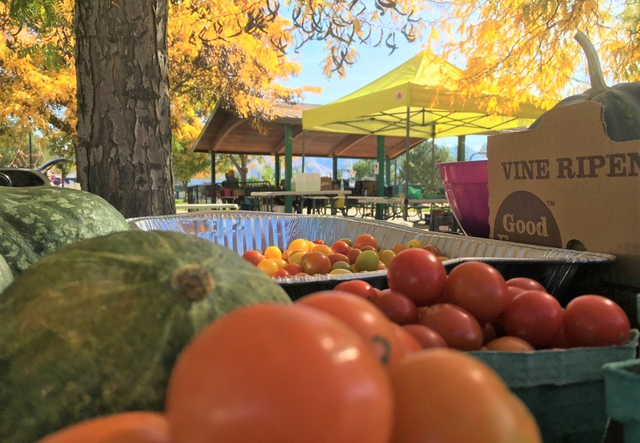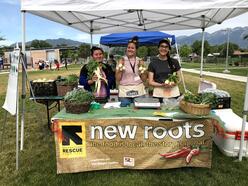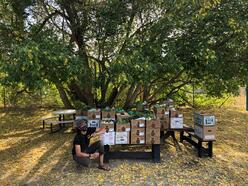
As autumn changes the Salt Lake valley from lively greens to warm reds, yellows and oranges, farmers markets begin to wind down and farmers can reflect on the season. This year, the New Roots markets shifted their operations to create a safe environment during the pandemic. These safety measures were not the only adjustment, though, as farmers at the Sunnyvale Farmers Market took the lead, selling their carefully tended produce directly to market customers. Even in the midst of crisis, farmers harvested more income than years past. A lot more.
“[The farmers] did a really good job setting their own prices,” observed Margot Draeger, who is the New Roots farmer empowerment coordinator at the International Rescue Committee (IRC) in Salt Lake City. Last year, only one farmer sold on his own, this year, consistently 11-15 farmers set up their own farm stands at the market. The safety precautions that changed the market’s point of sale process reduced the need for farmers to learn complicated systems. Customers entering the market were met by community volunteers who exchanged their dollars for market tokens to ensure a convenient and sanitized shopping experience.
Community volunteers contributed to the success of the Sunnyvale Market by helping the sales run smoothly. “The volunteers were really awesome,” Margot says, saying that they interacted with a small, but very reliable volunteer pool this year. Having volunteers at the ready was extremely helpful to their operation as they processed an average of $2,000 in electronic benefits transfer, or EBT, funds almost every Saturday.

The 2020 farmers market season boomed for New Roots farmers. In 2019, the weekly sales averaged $950, this year, the Sunnyvale Market averaged $3,300 each week. Margot attributes the increase this year to a few reasons, including a higher match incentive, more produce on hand, and the fact that farmers selling their own produce increased outreach to their communities.
Mu, a farmer selling at the Sunnyvale Market, says that before the weather became cold, people from her community often showed up to find their favorite vegetables at her stand. For her, farming is good for her family, and she enjoys planting crops native to her country. At her stand, she picks up a basket of tiny peppers. “Normally, these many peppers would cost ten dollars,” she says. “But we can freeze them ourselves and eat them later.”
Other farmers at the market enjoyed watching people buy their food as well. Abdullah, a refugee farmer, sits at his stand and looks out over one of the last markets of the year. “I enjoy seeing people come buy vegetables,” he says. Across from his stand, Omar sells his produce with his daughter, who has two jobs already but helps her father on the weekends.

“I love seeing the farmer’s there and the creativity they bring,” Margot says. “I love seeing their excitement if they’ve had a good day.” After the market closes for the day, New Roots, with the help of a food relief grant, is able to buy the remaining produce and distribute it to food-insecure members of the local Bhutanese and Nepali communities. According to Sierra Govett, the community garden specialist, New Roots has distributed 42 boxes, each valued at $40, back into the community as donations. “Within the span of an hour, all the boxes had been picked up and distributed,” Sierra shares.
This year saw many changes, not only at the Sunnyvale Market but at each of the New Roots markets, as they expanded and as farmers grew into their roles, selling the food they know best. “It was amazing to see them come through even though they didn’t know what to expect,” Margot says.
Learn more about the New Roots program and how you can support their efforts here>
